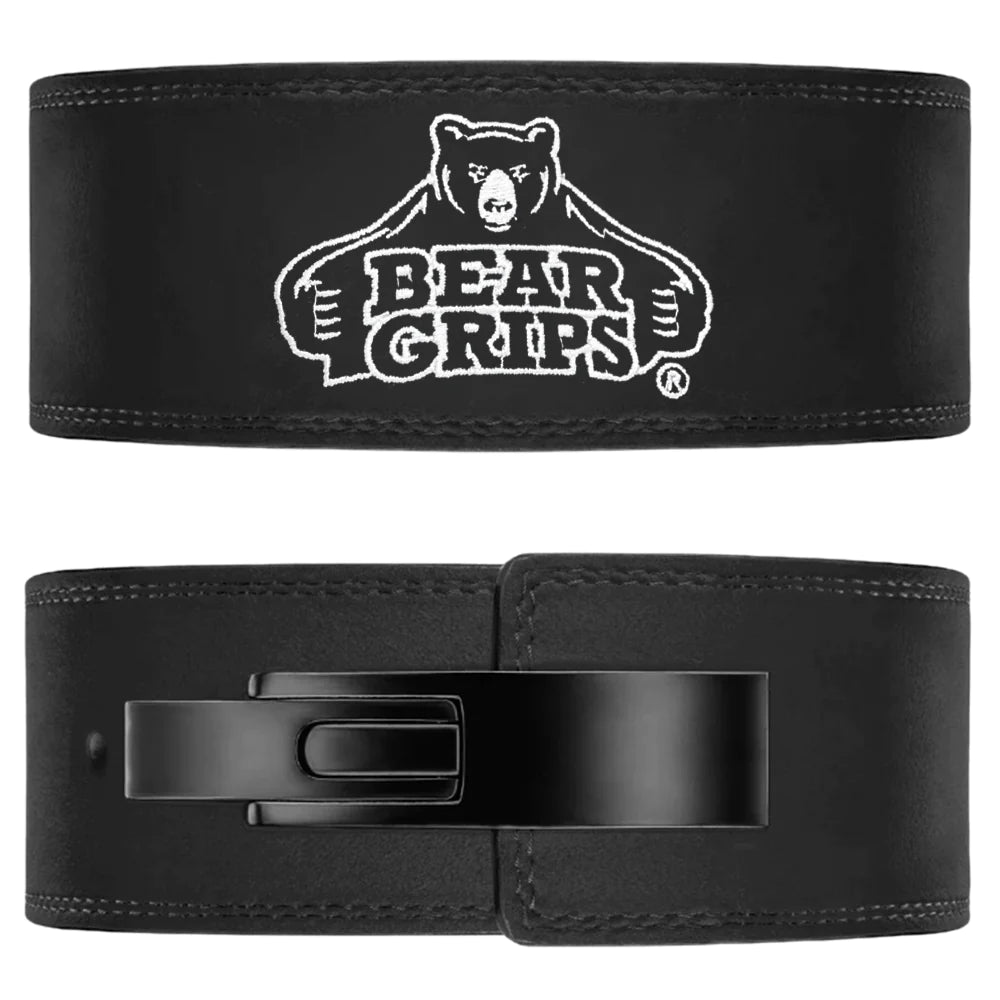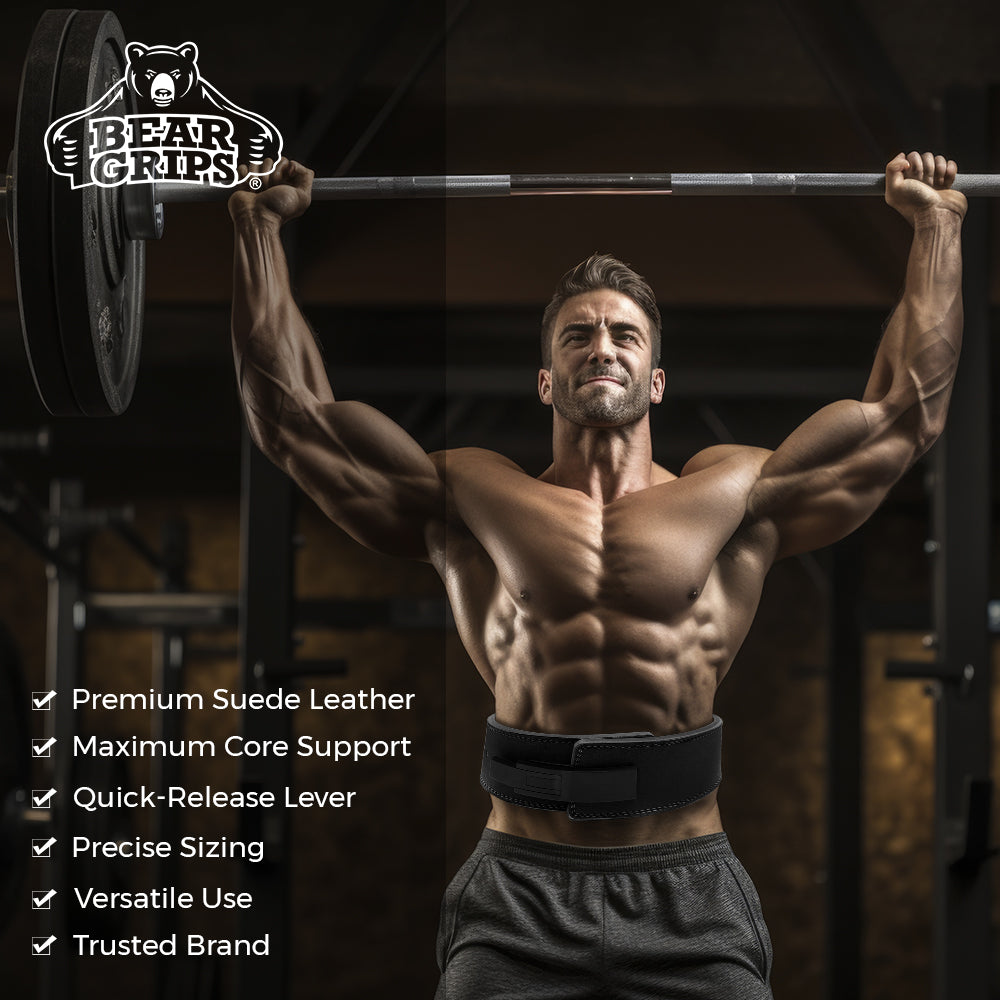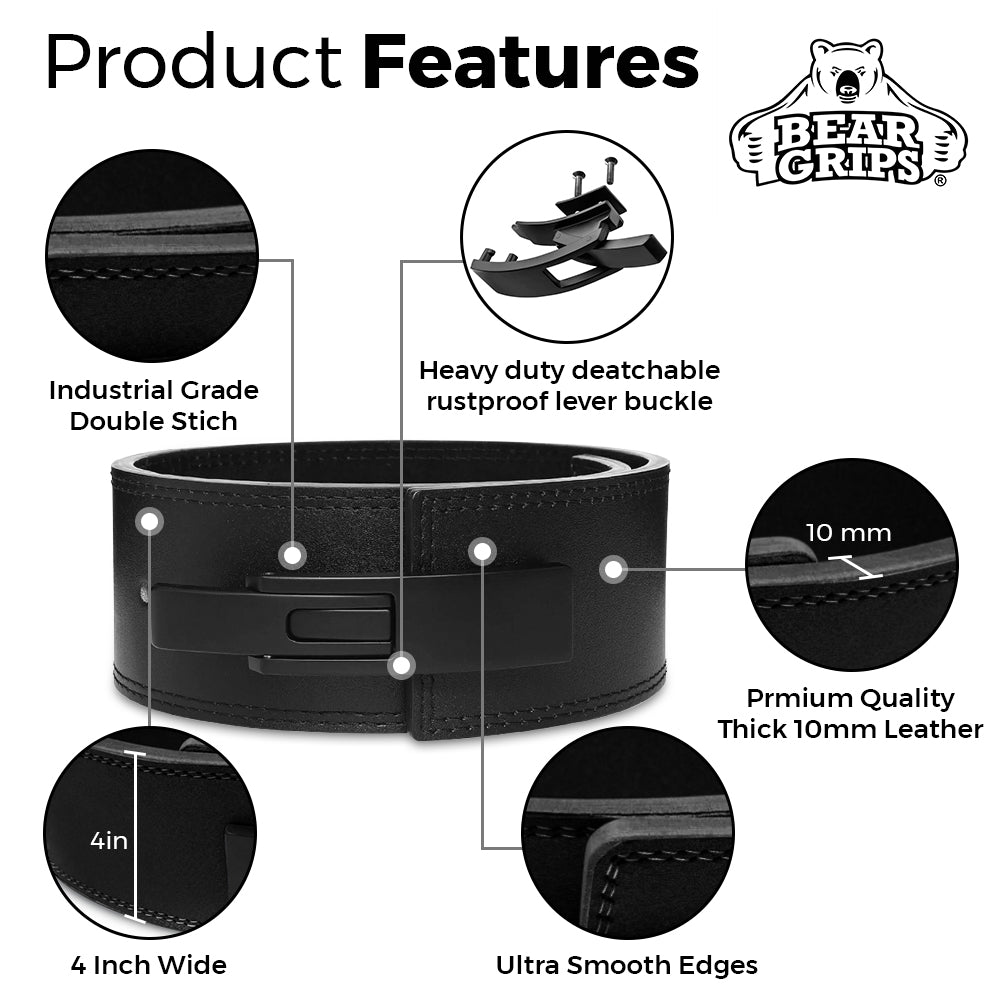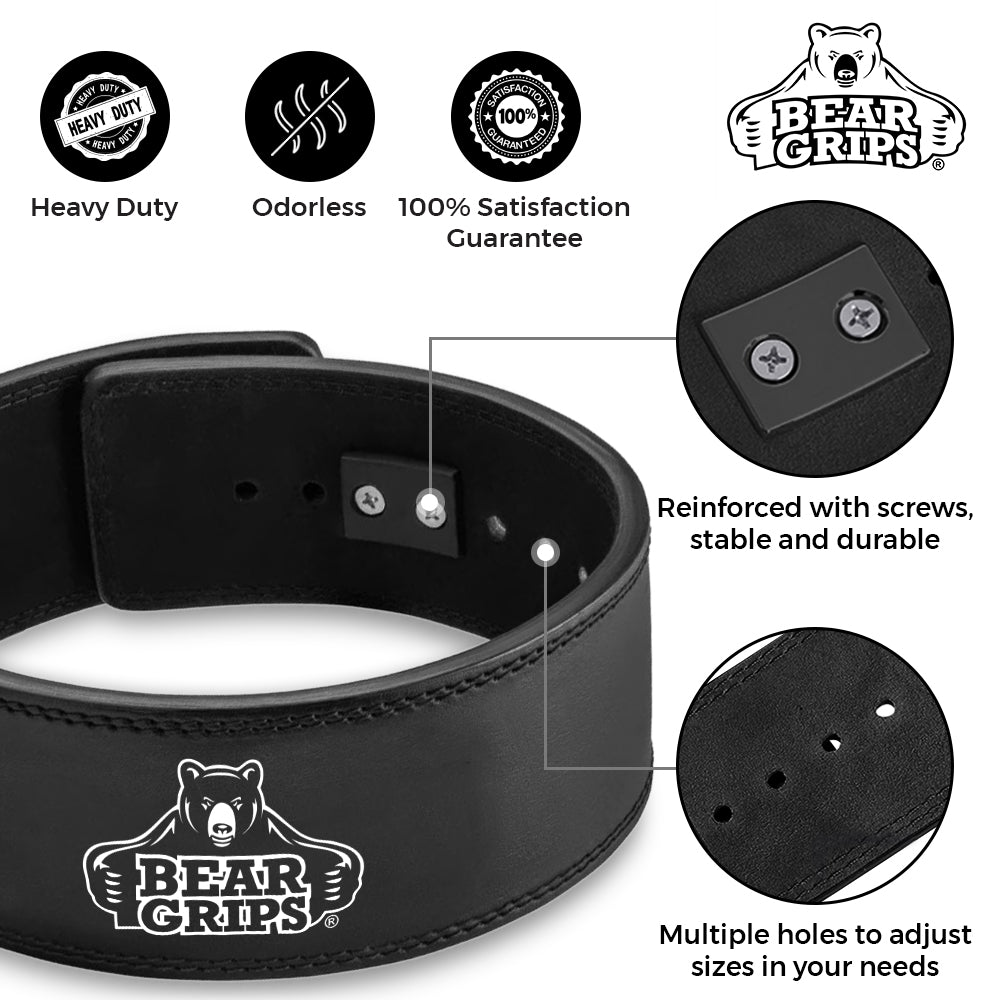
How to Wear & Adjust a Weightlifting Lever Belt?
Share
A weightlifting lever belt is an essential tool for powerlifters, providing unparalleled support and stability during heavy lifts. To fully harness the benefits of this specialized belt, it's crucial to understand how to wear and adjust it correctly. In this article, we will guide you through the process, from choosing the right size to positioning it on your torso and adjusting its tightness for maximum effectiveness.

Key Takeaways
- Wearing a weightlifting lever belt can greatly enhance stability and support during heavy lifting exercises.
- Choosing the correct size and positioning the belt properly on your torso are essential for optimal performance.
- Adjusting the tightness level of the lever belt allows for personalized support and comfortable breathing.
- Remember to prioritize proper breathing and bracing techniques while wearing a weightlifting lever belt.
- Always consult with a professional trainer or coach for guidance on using a lever belt effectively.
What is a Lever Belt?
A lever belt is a piece of equipment designed to provide rigid support, making it highly sought after among powerlifters and dedicated athletes. Made from premium leather materials, lever belts feature a strong lever support system for added stability during intense weightlifting sessions. These belts come in different thickness options, with the recommended choices being 10mm and 13mm. While it may take some time to get accustomed to using a lever belt and finding the ideal position on your torso for various exercises, its multiple levels of tightness allow for personalized support and a secure fit.
When discussing lever belts, it's important to note their popularity among powerlifters and avid athletes. The rigid support they provide helps maintain proper posture and form during lifts, reducing the risk of injury. The adjustable lever system ensures a snug fit and allows for quick and easy adjustments, ensuring optimal support during each repetition.

As mentioned, lever belts come in different thicknesses, commonly 10mm and 13mm. The choice of thickness depends on personal preference and the type of lifting being performed. Thicker belts offer more rigidity and support, making them suitable for heavy powerlifting exercises, while thinner belts offer slightly more flexibility and range of motion, making them ideal for athletes participating in multiple disciplines.
When wearing a lever belt, it's important to find the right size and position it correctly on your torso to maximize its effectiveness. The belt should sit snugly around the small of your back, with the front buckle covering your lower abs. By avoiding any jamming in the hip crease during movements like squats or deadlifts, you can ensure optimal support and prevent discomfort.
Lever Belt Thickness Comparison
| Thickness | Advantages | Disadvantages |
|---|---|---|
| 10mm | Offers a balance of support and flexibility | Slightly less rigid than 13mm |
| 13mm | Provides maximum support and rigidity | Less flexibility compared to 10mm |
Remember, when using a lever belt, it may require some trial and error to determine the tightness level that works best for you. Personal preference and the exercise being performed can influence the adjustment. Keep in mind that the belt should provide support without impeding your breathing or restricting your range of motion.
When to Wear a Lever Belt?
Wearing a lever belt daily is not always recommended, but it can be beneficial during heavy workouts. Powerlifters often use lever belts because they are easily adaptable for different positions on the torso based on the exercise. The lever belt provides support and stability during lifts, and adjusting its tightness level can enhance its effectiveness. It is important to test out the belt during warm-up and find personal preferences for maximum benefits.
When it comes to wearing a lever belt, timing is essential. While it may not be necessary or advisable for every workout, incorporating it into your routine during heavier lifts can offer significant advantages. Lever belts are particularly popular among powerlifters, as they allow for precise adjustments on the torso depending on the specific exercise being performed.
One of the key benefits of wearing a lever belt is its ability to provide support and stability during lifts. The rigid structure and secure fastening of the lever belt make it an excellent choice for maintaining proper form and technique when performing heavy compound movements such as squats, deadlifts, and overhead presses.
The lever belt offers excellent support and stability, allowing you to lift with confidence and reduce the risk of potential injuries.
Moreover, the effectiveness of a lever belt can be fine-tuned by adjusting its tightness level. This customization allows you to find the optimal fit that provides the right balance between support and range of motion for your specific needs. Experimenting with different tightness levels during warm-up sets can help you determine the most comfortable and supportive setting for your lifts.
Adding a lever belt to your weightlifting routine is a personal choice that should be based on factors such as exercise intensity, personal preference, and body mechanics. If you decide to incorporate a lever belt, it is essential to test it during warm-up exercises to determine your ideal tightness level.
It's worth noting that while wearing a lever belt can offer benefits during heavy workouts, it should not replace proper technique, form, and bracing. It should be used in conjunction with a solid foundation of strength and conditioning training.
By understanding when and how to utilize a lever belt effectively, you can optimize your training sessions and elevate your performance to new heights.

How to Wear a Lever Belt?
In order to maximize the benefits of a lever belt, it is crucial to wear it correctly. Follow these steps to ensure proper fit and positioning:
- Choosing the Right Size Lever Belt: Start by determining the correct size for your lever belt. Measure the circumference of your waist at the level where you plan to wear the belt. This will help you select the appropriate size.
- Proper Positioning: The lever belt should be worn around the small of your back, with the front buckle covering your lower abs. Make sure the belt is centered and sits snugly against your body.
- Avoiding Hip Crease Jam: During squats or deadlifts, it is important to prevent the belt from getting jammed in the crease of your hip. Position the belt slightly higher on your torso to avoid this issue.
- Optimal Support and Form: The lever belt should provide support to your core and lower back. Ensure that it is tight enough to offer stability during your lifts, but not so tight that it restricts your breathing or range of motion.
- Valsalva Maneuver for Stability: To determine the appropriate tightness level for your lever belt, employ the Valsalva maneuver. This involves taking a deep breath and holding it while contracting your abdominal muscles. The increased pressure created will aid in stabilizing your torso.
Proper Lever Belt Positioning
Correct positioning of the lever belt on your torso is crucial for optimal support and performance during your weightlifting routine. By choosing the right size, positioning the belt correctly, and adjusting its tightness, you can ensure maximum benefits from your lever belt. Remember to prioritize proper breathing and bracing techniques while using the belt.
How to Adjust a Lever Belt?
One of the advantages of a lever belt is its adjustable fit. Compared to a prong belt, you can achieve a tighter fit with a lever belt. This ensures maximum support and stability during your weightlifting routine. When adjusting a lever belt, here are a few key considerations:
- Markings: It is recommended to make markings on the belt for different exercises. This allows for consistency in adjusting its tightness level and ensures the desired support for each specific movement.
- Breathing Technique: The tightness of the lever belt should allow for proper breathing technique. It should be snug enough to provide support, but not so tight that it restricts your ability to take deep breaths during heavy lifts.
- Clothing Thickness: Consider the thickness of your workout attire when adjusting the lever belt. If you're wearing thicker clothing, you may need to adjust the tightness slightly to accommodate the extra layers.
- Quick Adjustments: Keeping a screwdriver on hand can be helpful for quick adjustments to the lever belt's tightness level. This allows for convenient modifications during your workout without interrupting your flow.
- Exercise and Personal Preference: The ideal tightness level of the lever belt may vary based on the exercise you're performing and your personal preference. Experimenting with different settings will help you find the optimal fit and support for each lift.
Remember, adjusting the tightness of your lever belt is crucial to ensure proper form, stability, and support during your weightlifting sessions. Find the right balance that suits your needs and allows you to perform at your best.

Conclusion
Wearing and adjusting a weightlifting lever belt correctly is crucial for optimal support and enhanced performance during your lifting routine. Lever belts have gained popularity among powerlifters due to their stiffness and adjustability, allowing lifters to find the perfect fit for their specific needs. Finding the right size lever belt, positioning it correctly on your torso, and adjusting its tightness level are all key factors in maximizing the benefits of this equipment.
When wearing a lever belt, it is essential to prioritize proper breathing and bracing techniques. The belt should fit snugly around the small of your back, with the front buckle positioned over your lower abs. This positioning provides the necessary support and stability for heavy lifts like squats and deadlifts. Testing out the belt during warm-up can help you determine your personal preferences and find the optimal level of tightness.
In conclusion, weightlifting lever belts offer a reliable solution for powerlifters looking for enhanced performance and support. By wearing the belt correctly, ensuring a proper fit, and adjusting its tightness level, you can experience the full benefits of this equipment. Remember, proper form and technique should always be a priority when using a lever belt to maximize safety and efficiency during your workouts. Happy lifting!
Enhance your workouts by using a weightlifting lever belt from Bear Grips!
Shop at Amazon.com Now!
FAQ
What is a lever belt?
A lever belt is a weightlifting belt that provides greater support and stiffness, making it popular among powerlifters. It is fastened with an adjustable lever, allowing for quick adjustment and fastening.
When should I wear a lever belt?
Wearing a lever belt daily is not always recommended, but it can be beneficial during heavy workouts. Powerlifters often use lever belts because they are easily adaptable for different positions on the torso based on the exercise. The lever belt provides support and stability during lifts.
How do I wear a lever belt correctly?
The first step in wearing a lever belt correctly is determining the right size for you. The belt should fit around the small of your back, with the front buckle covering your lower abs. Proper positioning and fit are important for optimal support and form.
How do I adjust the tightness of a lever belt?
One of the advantages of a lever belt is its adjustable fit. The tightness of the belt should allow for proper breathing technique and consider clothing thickness. Adjusting the tightness level may vary based on the exercise and personal preference.


